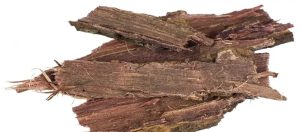Discovering the Hidden Benefits of Mimosa Hostilis Inner Root Bark for Your Body
Mimosa Hostilis, often referred to as Jurema, is a plant native to the northeastern regions of Brazil. Its inner root bark has gained considerable attention in recent years due to its numerous potential health benefits. While it has been traditionally used by indigenous communities in South America for spiritual and medicinal purposes, modern research has also started to reveal the remarkable properties it holds for the body. Among its various compounds, Mimosa Hostilis contains alkaloids, flavonoids, and tannins, each of which plays a significant role in promoting overall health. One of the most notable benefits of Mimosa Hostilis inner root bark is its potential to support skin health. It has natural astringent properties, meaning it can help tighten and tone the skin. This quality makes it an excellent ingredient in skincare products aimed at reducing the appearance of wrinkles and promoting a youthful complexion. The bark also contains antioxidants that protect the skin from environmental damage, such as pollution and UV rays, which can accelerate aging and the appearance of fine lines.

Additionally, its anti-inflammatory properties make it effective in soothing irritated skin, making it an ideal remedy for conditions like eczema or psoriasis. Beyond its skin benefits, Mimosa Hostilis inner root bark has been praised for its detoxifying effects. The presence of antioxidants, particularly in the form of flavonoids, helps neutralize free radicals in the body, which are known to cause oxidative stress and contribute to various chronic diseases. By reducing oxidative stress, Mimosa Hostilis may help in protecting the liver, kidneys, and other vital organs from damage. It also plays a role in improving digestion by supporting the body’s ability to eliminate toxins, thereby promoting a healthier gut. In addition to its antioxidant and detoxifying properties, Mimosa Hostilis has also been linked to mood enhancement and mental clarity. Indigenous tribes have long used the plant for its psychoactive effects, believing it to have the ability to induce altered states of consciousness. While its use for spiritual rituals is well-documented, the active compounds in the root bark, such as alkaloids, may contribute to reducing anxiety and promoting relaxation.
This makes it an intriguing option for those looking to reduce stress and improve emotional well-being. Research into the potential neuroprotective effects of Mimosa Hostilis is still in its early stages, but the plant’s ability to support mental health could be an exciting area for further exploration. Mimosa Hostilis also contains a variety of other bioactive compounds that support immune function. Its antibacterial and antifungal properties make it a useful remedy for infections, especially in cases of wounds or skin abrasions. When applied topically, Mimosa Hostilis has been shown to help promote healing, reducing the risk of infection and supporting tissue regeneration and Where to buy MHRB. Additionally, it may help boost the body’s overall immune response, making it a valuable tool in preventing illness and promoting long-term health. Mimosa Hostilis inner root bark is a potent natural remedy with a broad range of benefits for the body. From enhancing skin health and supporting detoxification to improving mental clarity and boosting immune function, this plant offers a wealth of healing properties. Its traditional use in indigenous cultures highlights its value, and modern science continues to uncover its potential.



